ANSYS BLOG
January 31, 2023
New Ansys Systems Tool Kit (STK) Features in 2023 R1
The latest release of Ansys Systems Tool Kit (STK) continues to expand and enhance integration across Ansys multiphysics solvers, boosting confidence in early concept system design and improving decision-making and efficiency in the engineering process. Ansys Fluent and STK’s Aviator capability enables the definition of higher-fidelity aircraft trajectories while considering the effects that an aircraft platform geometry may have on the overall aerodynamics and performance capabilities. This release also introduces a radar clutter modeling capability that enables you to define clutter models and evaluate the impact on a radar’s ability to resolve target objects within the modeled environment. In addition, spacecraft trajectory designers using STK’s Astrogator capability can now take advantage of enhanced Python scripting.
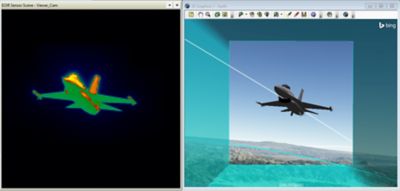
Enhanced Radar Clutter Modeling
Radar systems must consider different forms of radio frequency (RF) signal return, such as interference from intentional or unintentional sources or energy reflected from unintended targets. Buildings, trees, and even the ocean’s surface can reflect energy back to a radar’s receiver and produce an effect known as clutter.
STK provides engineers with the ability to model radar systems, target objects, and other environmental artifacts to understand a radar’s anticipated performance and capabilities. With this latest release, STK’s approach to incorporating and modeling radar clutter effects has been consolidated to make it easier for you to introduce clutter effects and consider their impacts on your modeled radar’s performance.
This update enables you to define clutter source locations and the scattering properties of the geometry. In addition, you can introduce a list of clutter sources to be included and considered by the radar system. These clutter definition models can now also be defined as centralized components through the STK Component Browser so that other modeled systems can easily reference them. This reduces the complexity in defining radar clutter and provides additional modeling flexibility by allowing clutter sources to support multiple scattering definitions.
Integrated Electro-Optical/Infrared Thermal Model
Sensor system designers need to accurately simulate conditions under which their sensors will be expected to operate and perform. This release of STK introduces a new feature for STK’s electro-optical/infrared (EOIR) capability: pointing to data providers for temperatures. It includes both Aviator data providers for aircraft and missiles and passive thermal models for satellites and missiles from STK’s Space Environment Effects Tool (SEET). This capability also permits any future temperature data providers or potential scalar calculations that could generate temperature values to be used by EOIR directly. For instance, with aircraft objects, the EOIR shape definitions now enable you to directly link to an aircraft target object’s thermal load as produced by Aviator’s flight modeling capability.
This feature lets EOIR users directly integrate the thermal load model without needing to export a report, load it in Microsoft Excel, massage and reformat the data, and import it back into EOIR.
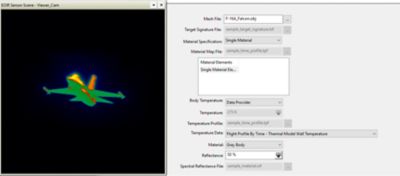
Fluent Interoperability Enhancements
This latest release continues to provide expanded integration between Fluent and Aviator for advanced aircraft flight profile modeling — now enabling Fluent Aero models to be integrated with Aviator’s Advanced Fixed Wing Tool so that computational fluid dynamics (CFD) results can directly drive high-fidelity mission modeling without the need to create additional customized files. This also lets users modify lift efficiency to adapt models to known data points or import reduced-order model (ROM) data from Fluent and adjust performance aspects while evaluating change impact.
You can now easily integrate data from Fluent to improve the accuracy of Aviator flight models and adjust them to explore how parameter changes affect mission outcome. This benefits users with access to Fluent models who want to evaluate how their designs perform in a mission context, or who want to increase accuracy of mission modeling.
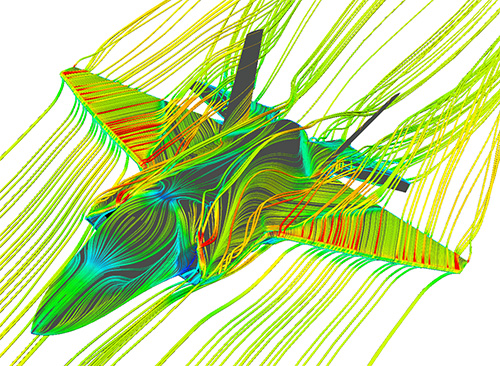
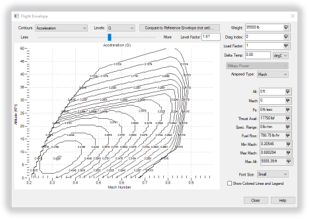
Create Aviator Procedures from External Position Ephemeris Files
Aviator provides a flexible, procedure-oriented approach for mission designers to configure realistic aircraft routes. Procedures are used to represent different operations of an aircraft’s flight, such as takeoffs and landings, en route waypoints, common holding patterns, and other performance-constrained procedures used to create realistic flight profiles.
It is common for engineers to have access to representative trajectory data from real-world operations, simulated trajectories, or other tools that may be used in their design toolchain. With this latest release of STK, Aviator introduces a new procedure in which you can reference external trajectory data while still allowing Aviator to apply appropriate attitude, aerodynamic, propulsion, and thermal models. You can evaluate your designs against planned trajectories, as well as upload your own trajectory file. This lets you use Aviator propulsion and aerodynamics models to determine temperature profiles, lift requirements, and other parameters for those trajectories.
Currently, to take advantage of Aviator’s analytical capabilities, you must assemble trajectories from Aviator’s existing procedure types and define the parameters for each stage of flight. Simulating a complex flight, or one that physically took place, requires careful tuning of each flight stage. Now, with External Ephemeris, you can generate a trajectory directly from external data. This data can come from a real flight or from an externally generated simulated flight. The trajectory, once imported, can use the flight performance analysis built into Aviator, allowing you to quickly and easily evaluate thrust required, load factors, expected fuel usage, and other parameters.
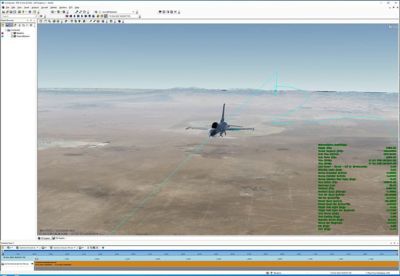
Enhanced Python Support for Astrogator Trajectory Design
STK’s Astrogator capability scripting tool is a powerful mechanism for augmenting workflows within Astrogator. The addition of native support for Python scripting within this framework enables the possibility to leverage existing Python modules and represents a convenient option for users already versed in the increasingly popular Python language. Additionally, pre-installed Python wrappers for all Astrogator plugin points yield new, powerful plugin workflows that do not require registration within Windows or administrative privileges on the computer.
You can now take advantage of existing Python libraries and routines for use directly within the Astrogator execution process via embedded scripting and plugin points. Anyone who uses the Astrogator scripting tool or the various plugin points is no longer limited to languages such as VBScript and JScript, which generally have smaller communities. These previously available languages also have proprietary architectures. The other remaining option for use in the scripting tool is MATLAB.
TETK Scripting Tool Improvements and Continued Enhancements to Data Visualization
This release brings several new upgrades to STK’s Test and Evaluation Tool Kit (TETK) scripting tool. The tool enables you to produce a new STK scalar calculation based on existing scalars in STK’s Analysis Workbench or ones loaded as external data to TETK. This gives you flexibility to create new data values for analysis that may not be represented in your original dataset. It simplifies the process of creating a script file and running it through Ansys Workbench to quickly create a new scalar with the press of a button.
Another major upgrade is the ability to save scripts you've created. This allows you to quickly access them later for edits, as well as ensuring they will persist when sharing your STK scenarios with other users. Another upgrade is the ability to view a list of language script functions along with descriptions for the language in which you are writing (MATLAB, Perl, or VBScript). Lastly, the scripting tool now lets you quickly add statistical parameters for a chosen scalar, including minimum, maximum, mean, and standard deviation.
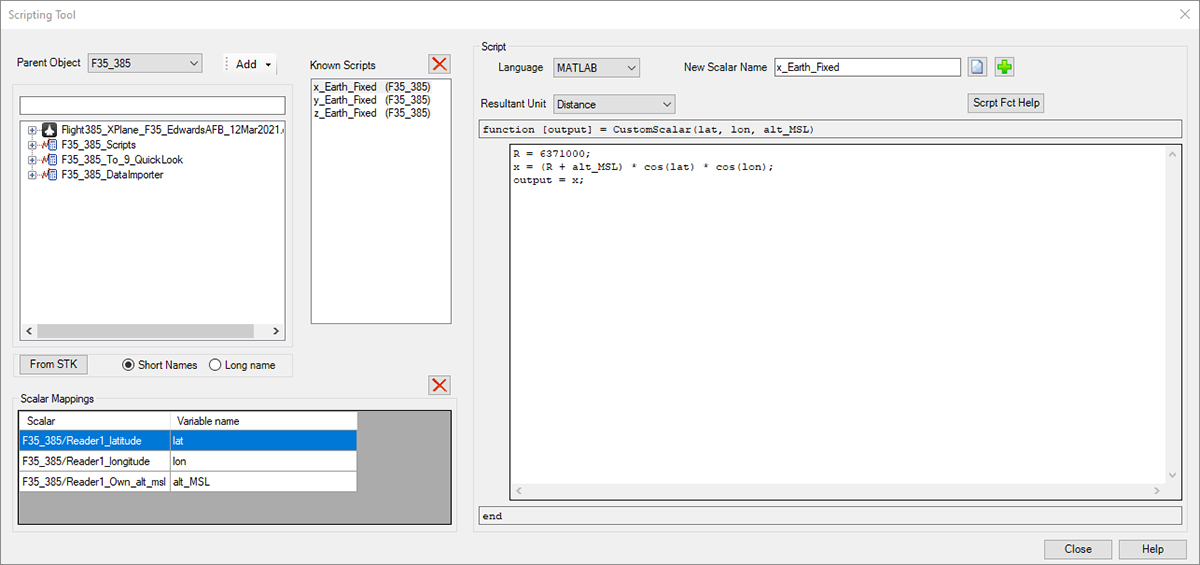
Learn More
To learn more about STK Radar Clutter geometries, scattering models through the Radar plugin interface, and how to analyze the impacts of clutter, view the webinar: What's New in Ansys 2023 R1: Radar Clutter Modeling.